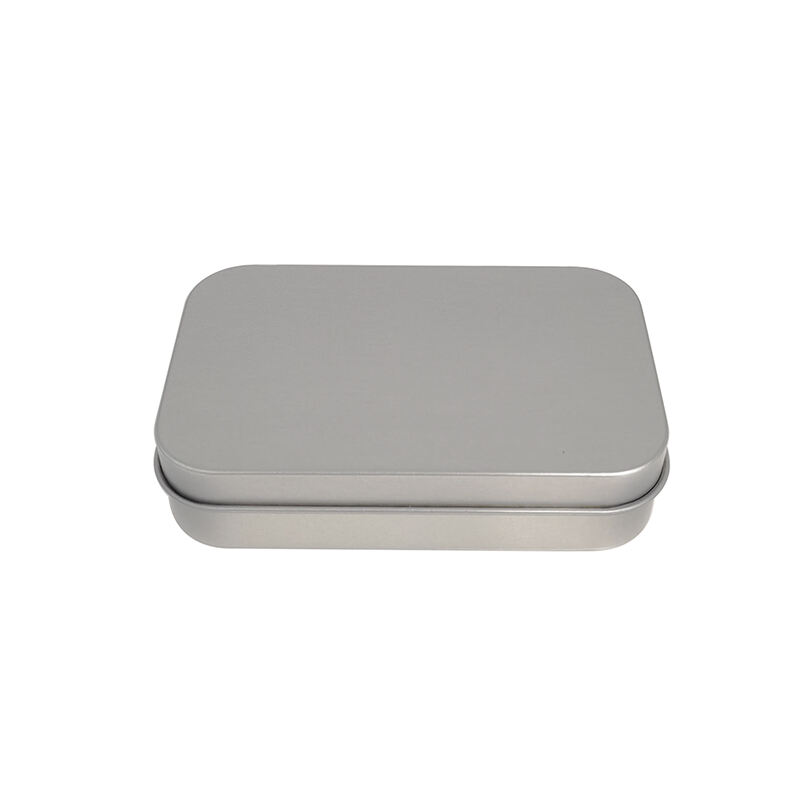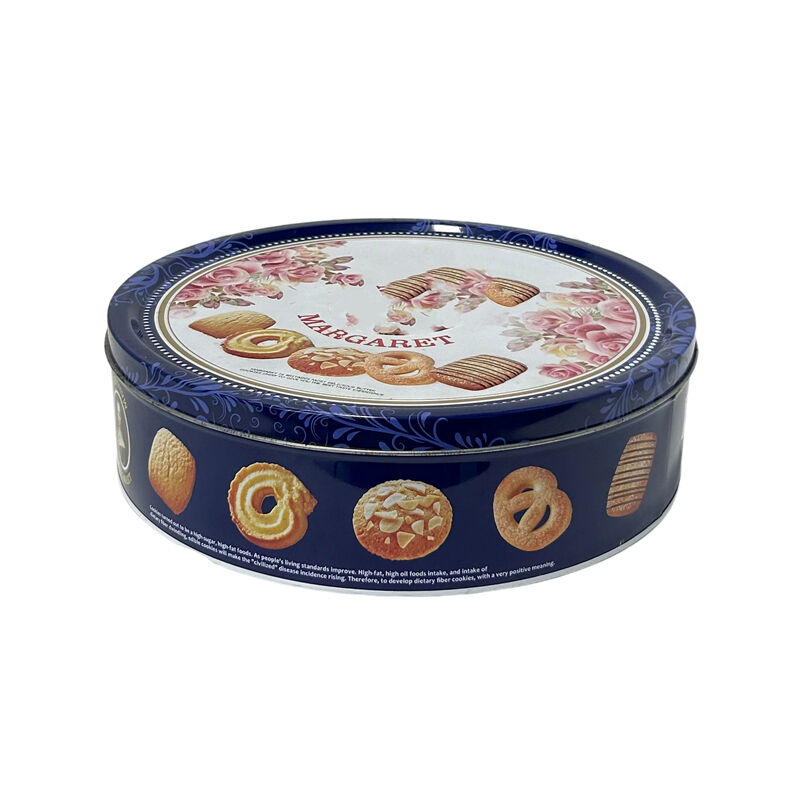When selecting packaging solutions for products ranging from gourmet foods to promotional items, understanding the various finishes available for metal tin containers is crucial for making informed decisions. Metal tin finishes not only affect the aesthetic appeal of packaging but also influence functionality, durability, and brand perception. The three primary finish types—gloss, matte, and hammered—each offer distinct advantages and applications that can significantly impact your packaging strategy and customer experience.

The choice of finish extends beyond mere visual preferences, encompassing practical considerations such as resistance to fingerprints, ease of cleaning, production costs, and compatibility with various printing techniques. Each finish type interacts differently with light, creating unique visual effects that can enhance or detract from your product's market appeal. Understanding these characteristics enables manufacturers and brand owners to make strategic decisions that align with their target market preferences and functional requirements.
Understanding Gloss Finishes for Metal Tin Applications
Characteristics and Visual Appeal of Gloss Finishes
Gloss finishes on metal tin surfaces create a highly reflective, mirror-like appearance that enhances color vibrancy and provides exceptional visual depth. This finish type achieves its lustrous quality through specialized coating processes that create a smooth, uniform surface capable of reflecting light consistently across the entire container. The high-gloss appearance makes colors appear more saturated and creates an immediate premium perception among consumers, making it particularly suitable for luxury product packaging and gift items.
The manufacturing process for gloss finishes involves applying multiple layers of specialized coatings, often including primer, color, and clear protective topcoats. Each layer is carefully cured to achieve optimal adhesion and durability while maintaining the desired level of reflectivity. This multi-layer approach ensures that the gloss finish remains stable under various environmental conditions and handling scenarios, providing long-lasting visual appeal throughout the product's lifecycle.
Practical Applications and Industry Uses
Industries frequently utilizing gloss finish metal tin containers include confectionery manufacturers, premium tea and coffee brands, cosmetics companies, and promotional product distributors. The high-impact visual appeal of gloss finishes makes them ideal for retail environments where products compete for consumer attention on crowded shelves. Additionally, the smooth surface of gloss finishes provides excellent compatibility with various printing techniques, including offset printing, screen printing, and digital printing methods.
However, gloss finishes require careful consideration regarding maintenance and durability concerns. While they offer superior visual appeal, gloss surfaces tend to show fingerprints, scratches, and handling marks more readily than other finish types. This characteristic necessitates additional protective measures during packaging, shipping, and retail display to maintain the pristine appearance that consumers expect from premium products.
Exploring Matte Finishes and Their Unique Properties
Surface Characteristics and Tactile Experience
Matte finishes create a non-reflective, subdued appearance that offers a sophisticated and contemporary aesthetic appeal. Unlike gloss finishes, matte surfaces scatter light rather than reflecting it directly, resulting in a uniform appearance that minimizes the visibility of minor imperfections, fingerprints, and handling marks. This characteristic makes matte finishes particularly attractive for products that undergo frequent handling or require a more understated, professional appearance.
The tactile experience of matte-finished metal tin containers provides a pleasant, soft-touch sensation that many consumers find appealing. This unique texture is achieved through specialized coating formulations and application techniques that create microscopic surface irregularities, resulting in the characteristic light-scattering properties. The manufacturing process for matte finishes often involves the use of specialized additives that control the degree of light reflection, allowing for precise control over the final appearance.
Advantages in Modern Packaging Design
Modern packaging trends increasingly favor matte finishes due to their versatility and contemporary appeal. These finishes work exceptionally well with minimalist design approaches, providing an elegant backdrop for simple graphics, embossed elements, or selective gloss accents. The non-reflective nature of matte surfaces also makes them ideal for photography and digital marketing applications, as they eliminate unwanted glare and reflections that can interfere with product presentation.
From a practical standpoint, matte finishes offer superior durability characteristics compared to high-gloss alternatives. The light-scattering properties help conceal minor scratches and wear patterns that would be immediately visible on gloss surfaces. This durability advantage translates to reduced packaging waste and improved customer satisfaction, as products maintain their intended appearance throughout their entire lifecycle from manufacturing to end-use.
Hammered Finishes and Distinctive Texture Applications
Creating Unique Visual and Tactile Experiences
Hammered finishes represent the most distinctive option among Metal Tin surface treatments, featuring intentionally created surface irregularities that mimic the appearance of hand-hammered metalwork. This finish type creates complex light patterns as illumination interacts with the varied surface topography, resulting in a dynamic visual experience that changes based on viewing angle and lighting conditions. The three-dimensional texture provides exceptional tactile interest, making hammered finishes particularly suitable for premium products where sensory experience plays a crucial role in brand perception.
The manufacturing process for hammered finishes involves specialized equipment that creates controlled surface deformation patterns before applying protective coatings. These patterns can range from subtle texture variations to pronounced geometric designs, depending on the specific aesthetic requirements and functional considerations. The complexity of this manufacturing process typically results in higher production costs compared to smooth finish alternatives, but the unique visual impact often justifies the additional investment for premium product applications.
Specialized Applications and Market Positioning
Hammered finishes excel in applications where differentiation and premium positioning are primary objectives. Industries commonly utilizing this finish type include artisanal food producers, craft beverage manufacturers, luxury gift packaging, and specialty retail products. The distinctive appearance helps products stand out in competitive retail environments while communicating quality and craftsmanship values to discerning consumers.
The unique surface characteristics of hammered finishes provide practical advantages beyond aesthetic appeal. The irregular surface texture helps hide minor imperfections, scratches, and handling marks even more effectively than matte finishes. Additionally, the three-dimensional surface creates numerous small shadow areas that further enhance the ability to conceal wear patterns and maintain visual appeal throughout extended use periods.
Comparative Analysis of Finish Performance Characteristics
Durability and Maintenance Considerations
When evaluating metal tin finish options, durability performance varies significantly based on surface characteristics and intended applications. Gloss finishes, while offering superior visual impact, require the most careful handling and maintenance to preserve their pristine appearance. These surfaces show every fingerprint, scratch, and handling mark, necessitating additional protective packaging and careful supply chain management to maintain quality standards.
Matte finishes provide the optimal balance between visual appeal and practical durability, offering excellent resistance to visible wear while maintaining contemporary aesthetic qualities. The light-scattering properties effectively camouflage minor surface imperfections that would be immediately apparent on gloss surfaces. Hammered finishes offer superior durability characteristics due to their complex surface topography, which naturally conceals wear patterns and handling marks while providing unique visual interest.
Cost Implications and Production Efficiency
Production costs vary considerably among the three finish types, with gloss finishes generally representing the most economical option due to established manufacturing processes and widespread industry adoption. The multi-layer coating systems required for gloss finishes are well-optimized and can be applied efficiently using standard industrial equipment, resulting in competitive per-unit costs for large production volumes.
Matte finishes typically involve slightly higher production costs due to specialized coating formulations and application requirements. However, these additional costs are often offset by reduced quality control issues and lower rejection rates during manufacturing and packaging processes. Hammered finishes represent the highest cost option due to the specialized equipment and additional processing steps required to create the distinctive surface texture before applying protective coatings.
Selection Criteria for Optimal Finish Choice
Market Positioning and Brand Alignment
Selecting the appropriate finish type requires careful consideration of brand positioning, target market preferences, and competitive landscape dynamics. Premium luxury brands often gravitate toward gloss finishes for their immediate visual impact and association with high-quality products. However, contemporary minimalist brands may prefer matte finishes that align with modern design sensibilities and sustainable packaging trends.
Artisanal and craft-focused brands frequently choose hammered finishes to communicate authenticity, traditional craftsmanship, and premium quality positioning. The distinctive appearance helps differentiate these products from mass-market alternatives while justifying premium pricing strategies. Understanding your target market's aesthetic preferences and purchasing motivations is crucial for making the optimal finish selection that supports overall marketing objectives.
Functional Requirements and Application Environment
Beyond aesthetic considerations, functional requirements play a crucial role in finish selection decisions. Products requiring frequent handling, transportation through multiple distribution channels, or extended shelf life benefit from the durability advantages offered by matte or hammered finishes. These options maintain their intended appearance longer and require less protective packaging during shipping and storage.
Environmental factors such as humidity, temperature variations, and exposure to cleaning chemicals should also influence finish selection decisions. Some finish types demonstrate superior resistance to specific environmental challenges, making them more suitable for particular applications or geographic markets. Consulting with packaging engineers and conducting thorough testing helps ensure that the selected finish type will perform adequately throughout the entire product lifecycle.
FAQ
What factors should I consider when choosing between gloss and matte finishes for my metal tin packaging
The primary factors include your brand positioning, target market preferences, handling requirements, and budget constraints. Gloss finishes offer superior visual impact and color vibrancy, making them ideal for premium products and retail environments where shelf appeal is crucial. However, they require more careful handling and show wear more readily. Matte finishes provide better durability, contemporary appeal, and resistance to fingerprints and minor scratches, making them suitable for products that undergo frequent handling or require a more understated professional appearance.
How do production costs compare between different metal tin finish types
Gloss finishes are typically the most economical option due to established manufacturing processes and widespread industry adoption. Matte finishes involve slightly higher costs due to specialized coating formulations but often provide cost savings through reduced quality control issues and lower rejection rates. Hammered finishes represent the highest cost option due to specialized equipment requirements and additional processing steps needed to create the distinctive surface texture before applying protective coatings.
Which finish type offers the best durability for long-term product storage and handling
Hammered finishes provide superior durability due to their complex surface topography that naturally conceals wear patterns and handling marks. Matte finishes offer excellent durability with good resistance to visible wear while maintaining contemporary aesthetic appeal. Gloss finishes, while visually striking, show every imperfection and require the most careful handling to maintain their pristine appearance throughout the product lifecycle.
Can different printing techniques be used effectively on all three finish types
Yes, but compatibility varies by finish type. Gloss finishes provide excellent compatibility with various printing techniques including offset, screen, and digital printing methods, offering superior color reproduction and vibrancy. Matte finishes work well with most printing techniques but may require adjusted ink formulations to achieve optimal adhesion and appearance. Hammered finishes present unique challenges due to their irregular surface topology, often requiring specialized printing techniques or pad printing methods to achieve consistent coverage across the textured surface.
Table of Contents
- Understanding Gloss Finishes for Metal Tin Applications
- Exploring Matte Finishes and Their Unique Properties
- Hammered Finishes and Distinctive Texture Applications
- Comparative Analysis of Finish Performance Characteristics
- Selection Criteria for Optimal Finish Choice
-
FAQ
- What factors should I consider when choosing between gloss and matte finishes for my metal tin packaging
- How do production costs compare between different metal tin finish types
- Which finish type offers the best durability for long-term product storage and handling
- Can different printing techniques be used effectively on all three finish types

 EN
EN
 AR
AR BG
BG HR
HR CS
CS DA
DA NL
NL FI
FI FR
FR DE
DE EL
EL IT
IT JA
JA KO
KO NO
NO PL
PL PT
PT RO
RO RU
RU ES
ES SV
SV CA
CA IW
IW ID
ID LV
LV LT
LT SR
SR SK
SK SL
SL UK
UK VI
VI SQ
SQ HU
HU TR
TR FA
FA MS
MS GA
GA CY
CY LA
LA